Aftershokz Sportz Titanium review: another bone conduction headset that can be knotted
Aftershokz has replaced the wired version of its Sportz headphones and headsets with Sportz Titanium, dramatically improving sound quality, sound absorption and housing.
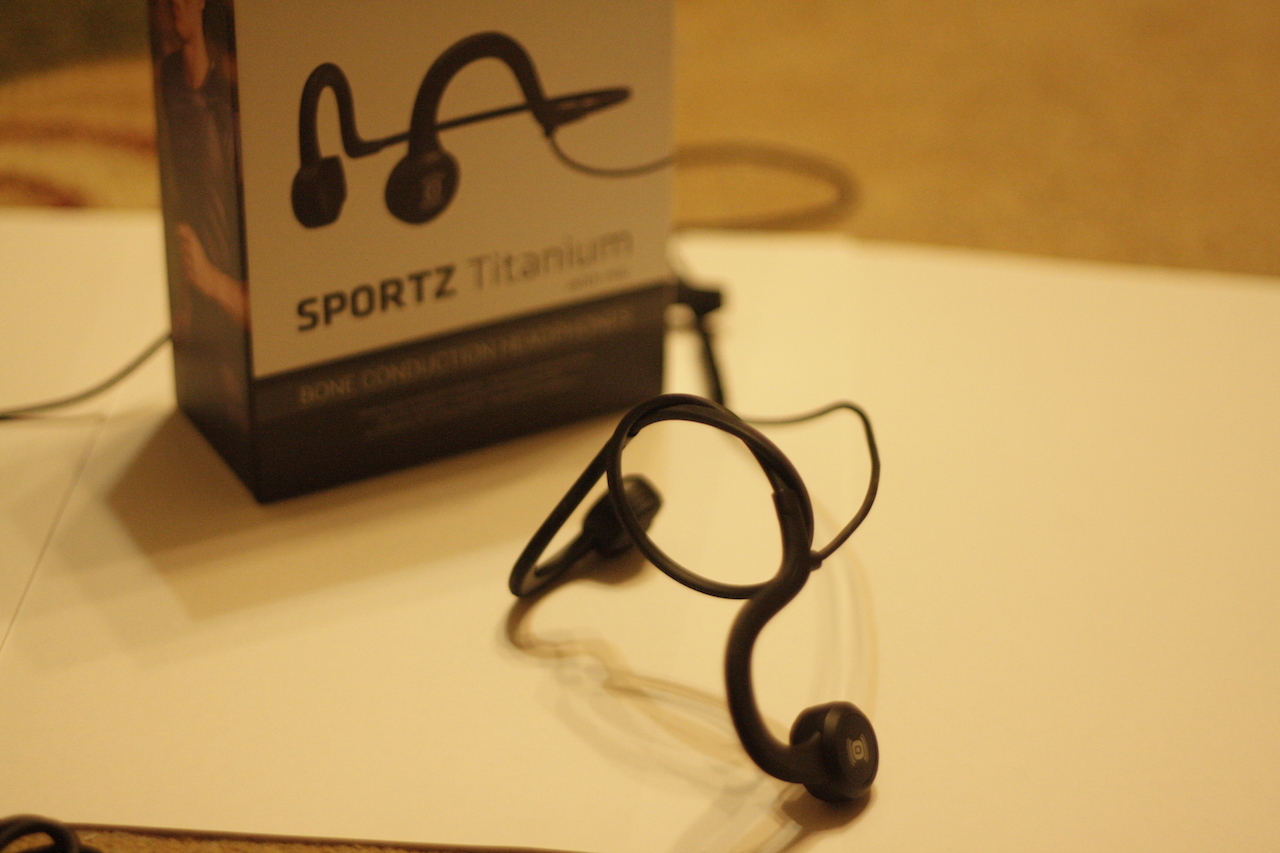
Headphones with bone-conduction sound should not be confused (and compared) with headphones that use bone-transmission technology. In the latter, sound emitters are built into the ear cushions, and most of the energy is not transmitted through the air, which prevents the bass from damaging the eardrum. Such headphones, as a rule, are classified as overhead and cover the ears of the listener.
Aftershokz headsets use onlybone conduction, which means they don’t cover their ears at all. There are currently three main headsets in the lineup: Bluez 2s, the flagship Trekz Titanium and the new Sportz models.
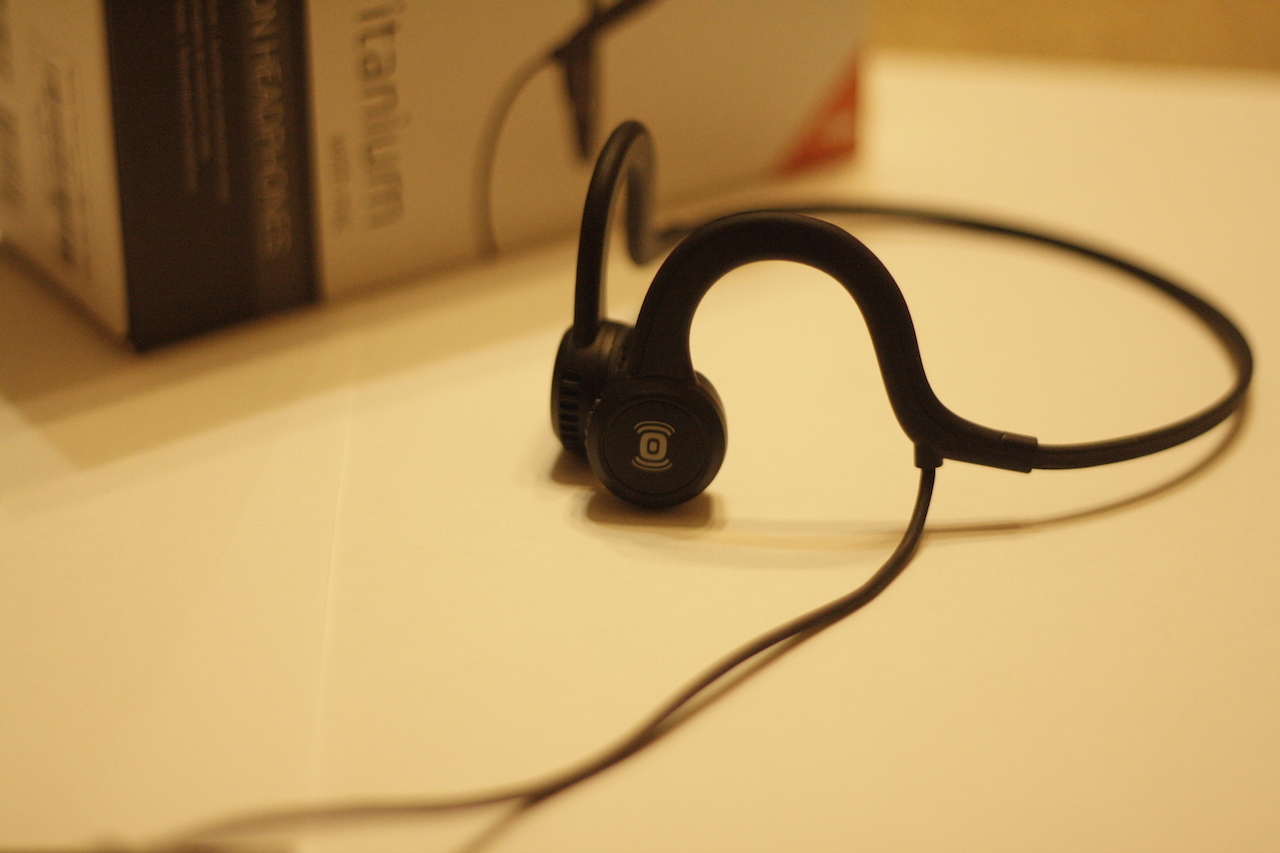
Titanium, or as they say “Tithenium”, is distinguished primarily by its flexible and durable headband, which holds its shape perfectly, does not break.
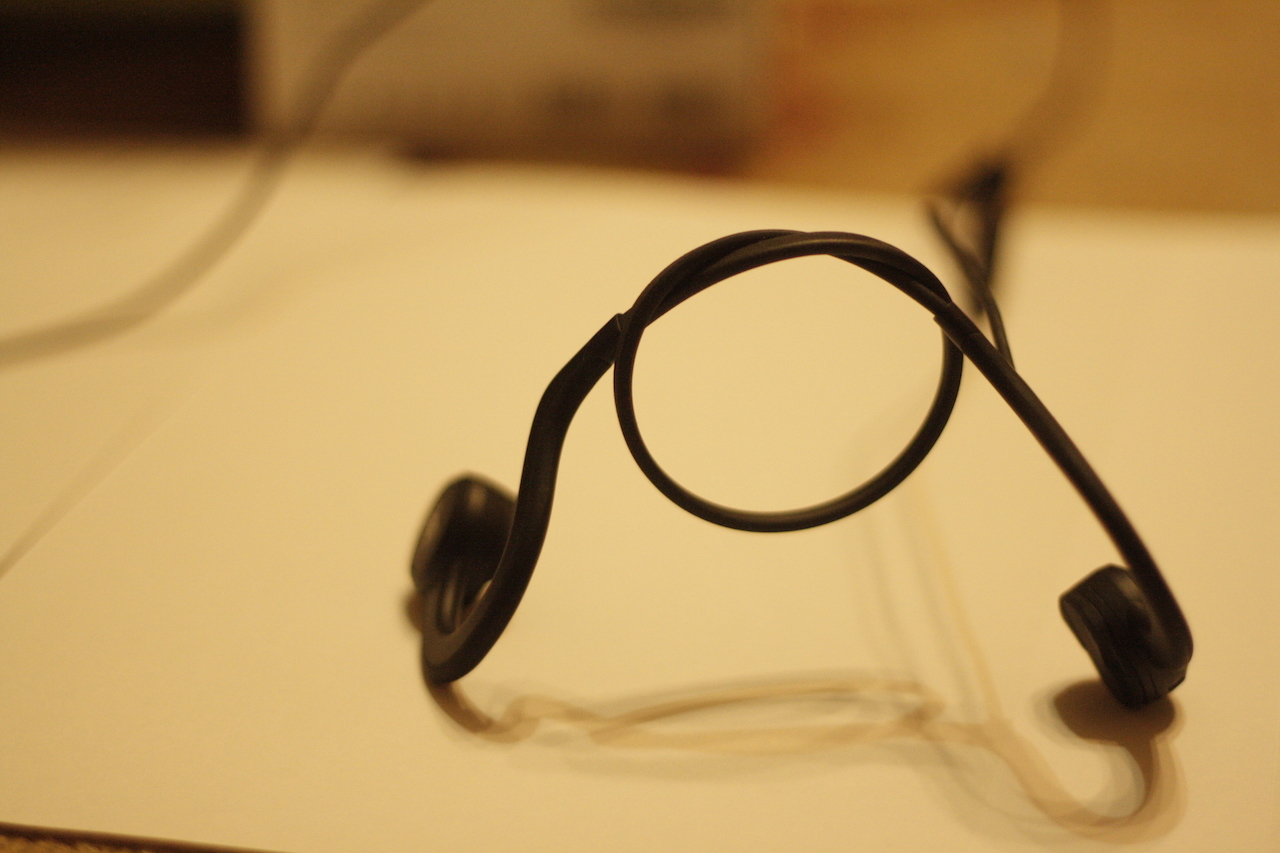
And it is also very light - the last model to be discussed: the approximate weight of the headband is 20 grams, the weight with the wire is 44 grams.
Sound
Sound has always been a controversial and partially “weak” side of bone conduction headsets, because they were inevitably compared with the “classic” ones. Nevertheless, even when Trekz “ smashed ” the Verge edition in the usual manner , there was nothing but the usual “weak bass”.
Indeed, piezoelectric emitters transmit lower frequencies worse, which is why the bone conduction of sound has taken root better in industries such as medicine, military affairs, scuba diving, and some others. However, Verge also admits that Aftershokz is still the best in the headphone category based on such technology.
The company itself emphasizes that it did not create headsets for music lovers. The main target audience is athletes (running and cycling), for whom a similar design of the headband allows you to feel more secure, respond to the sounds of the world in a timely manner, and also answer calls.
Also, models are in demand as headsets for motorists, for those who listen to audio lessons or books, where sound quality is not of paramount importance, or as an office headset.
But - the bass, it must be admitted, is still not the strongest place. To roughly understand how unusual everything is, you can use common tests from the network .
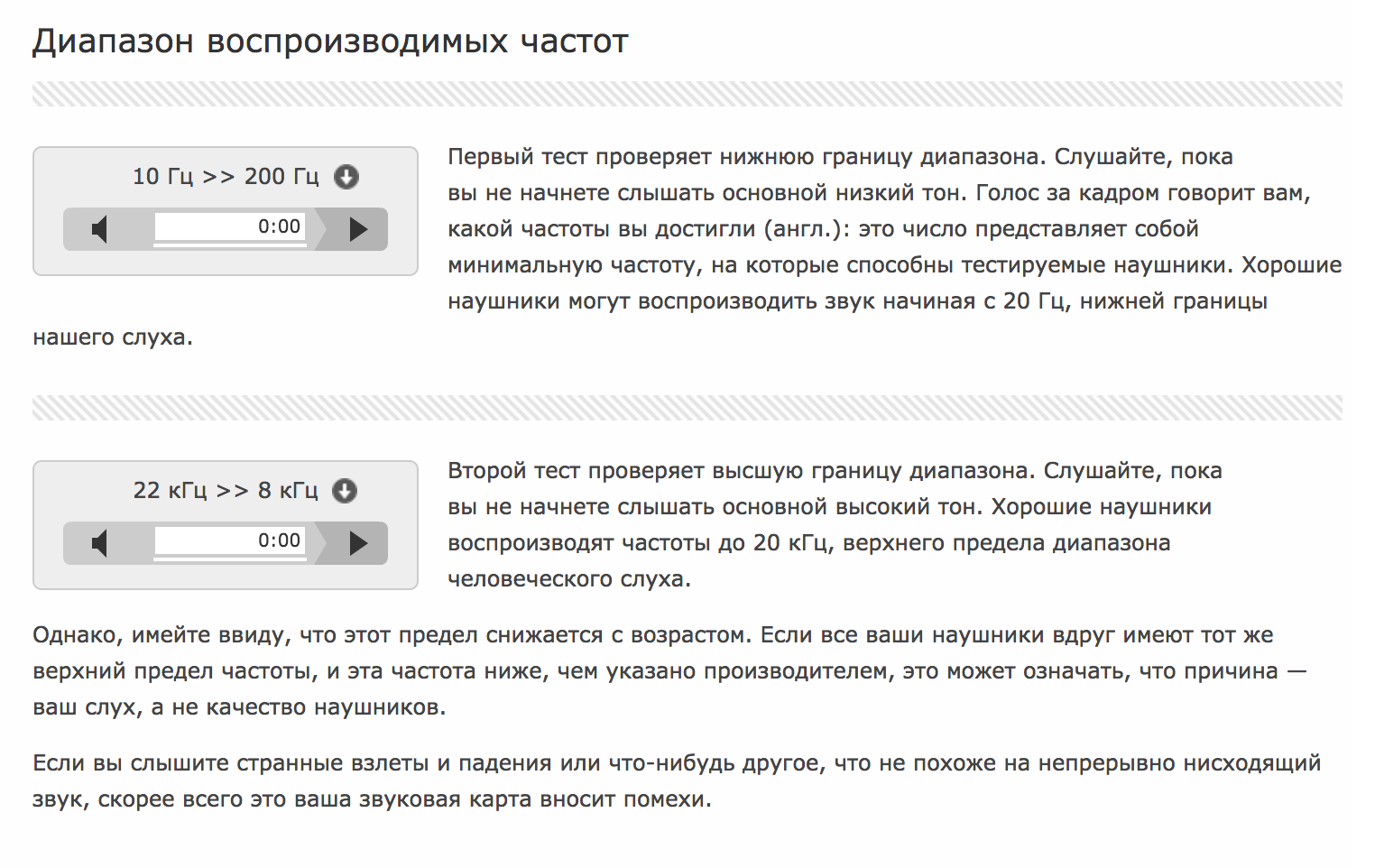
I quote literally. On checking the low frequencies compared to conventional headphones ( Croise plugs were on hand ):
In the second case, with high frequencies:
Design
By and large, constructively such headphones could be anything, because depending on the quality of the speaker, bone conduction will work from the forehead, and - as is possible with Aftershokz - from the elbow.
However, historically, headphones have been attached to the head, and Aftershokz Sportz Titanium has followed tradition. The only difference is that the speakers “throw” through the ears, like the temples of glasses, and are located in the temple area, without blocking the auricles.
The wired model came out unusually light. Partly due to the fact that the battery, which is “sewn” into the body of Bluetooth models, is wired. On the same block is the headset power button.
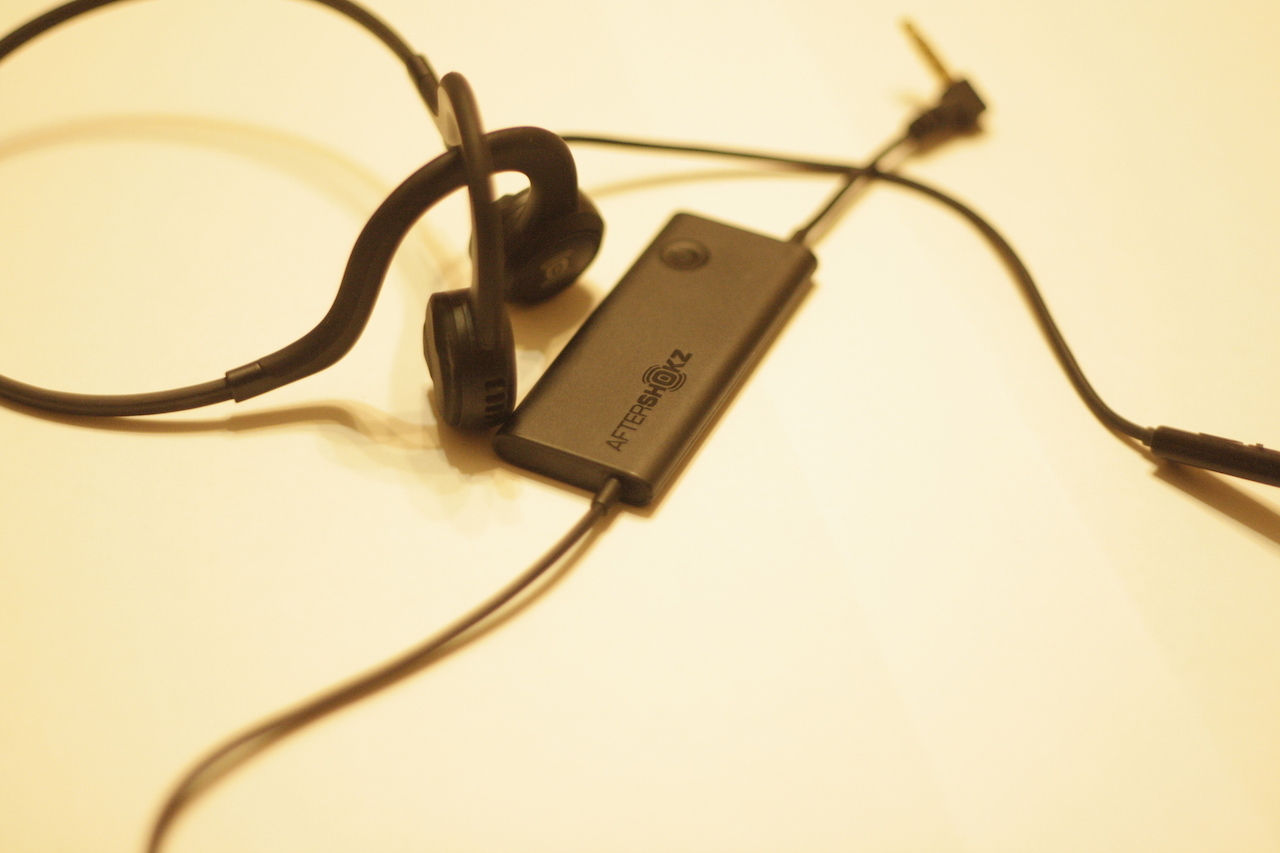
Here is the connector for charging the gadget! Since sound vibrations pass through a much more “dense material” —the skull bones — they need more energy, and even wired headphones with bone-conduction sound must be charged.
The remaining control buttons are placed in a separate element.
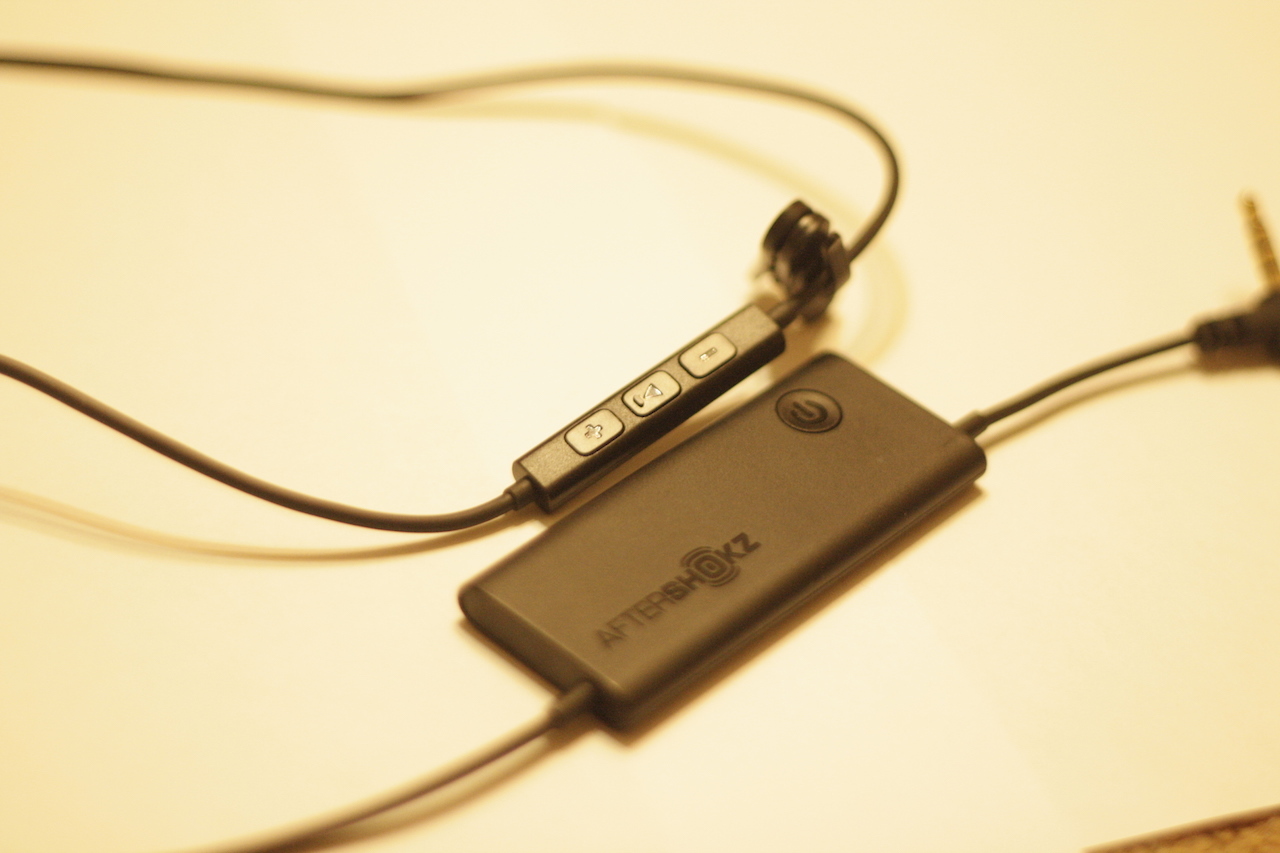
Speakers Sportz Titanium Round.
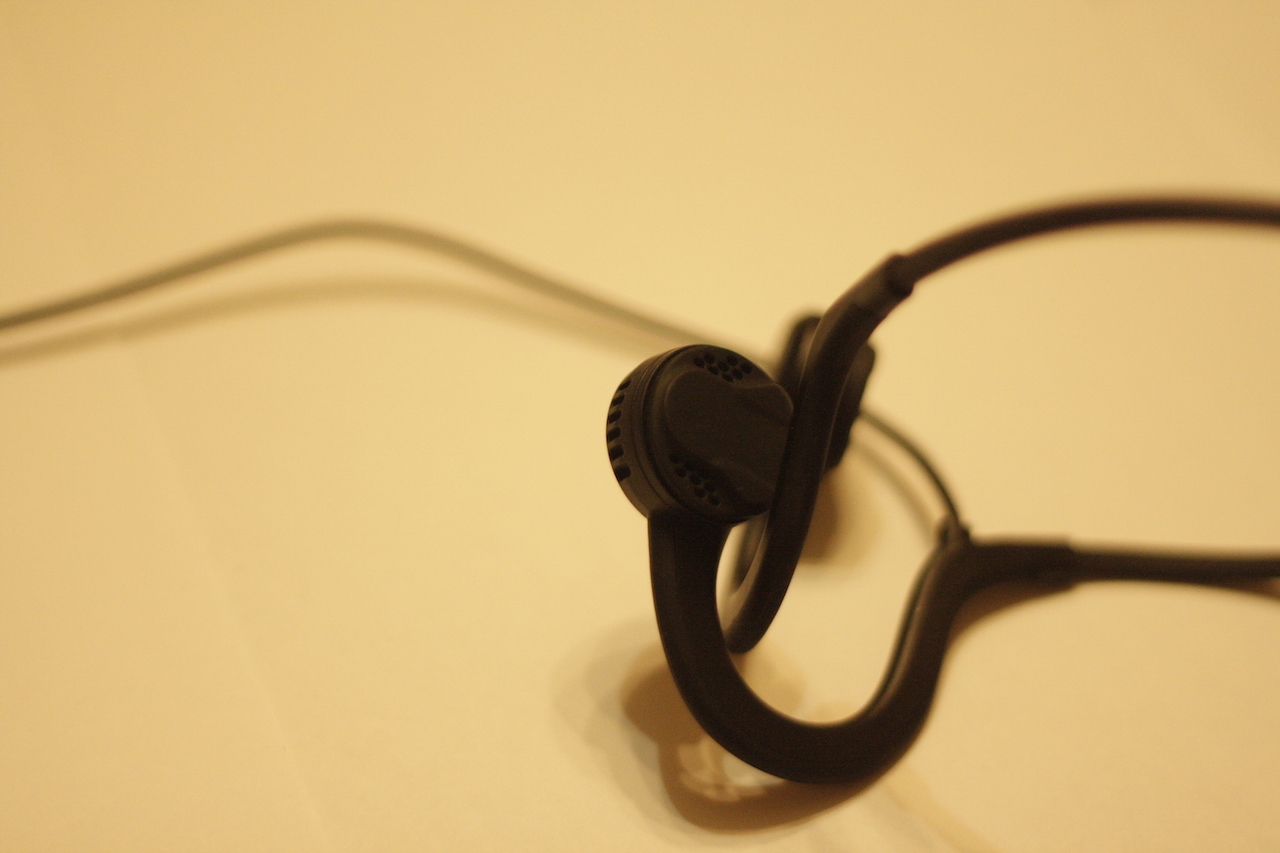
In sports
For the most part, the headphones with the technology of bone conduction of sound have the image of "sports" fixed because they do not cover their ears. However, since the first Hugo Gernsback consumer patent, which proposed the Osofon audio device in 1924, there are much more use cases.
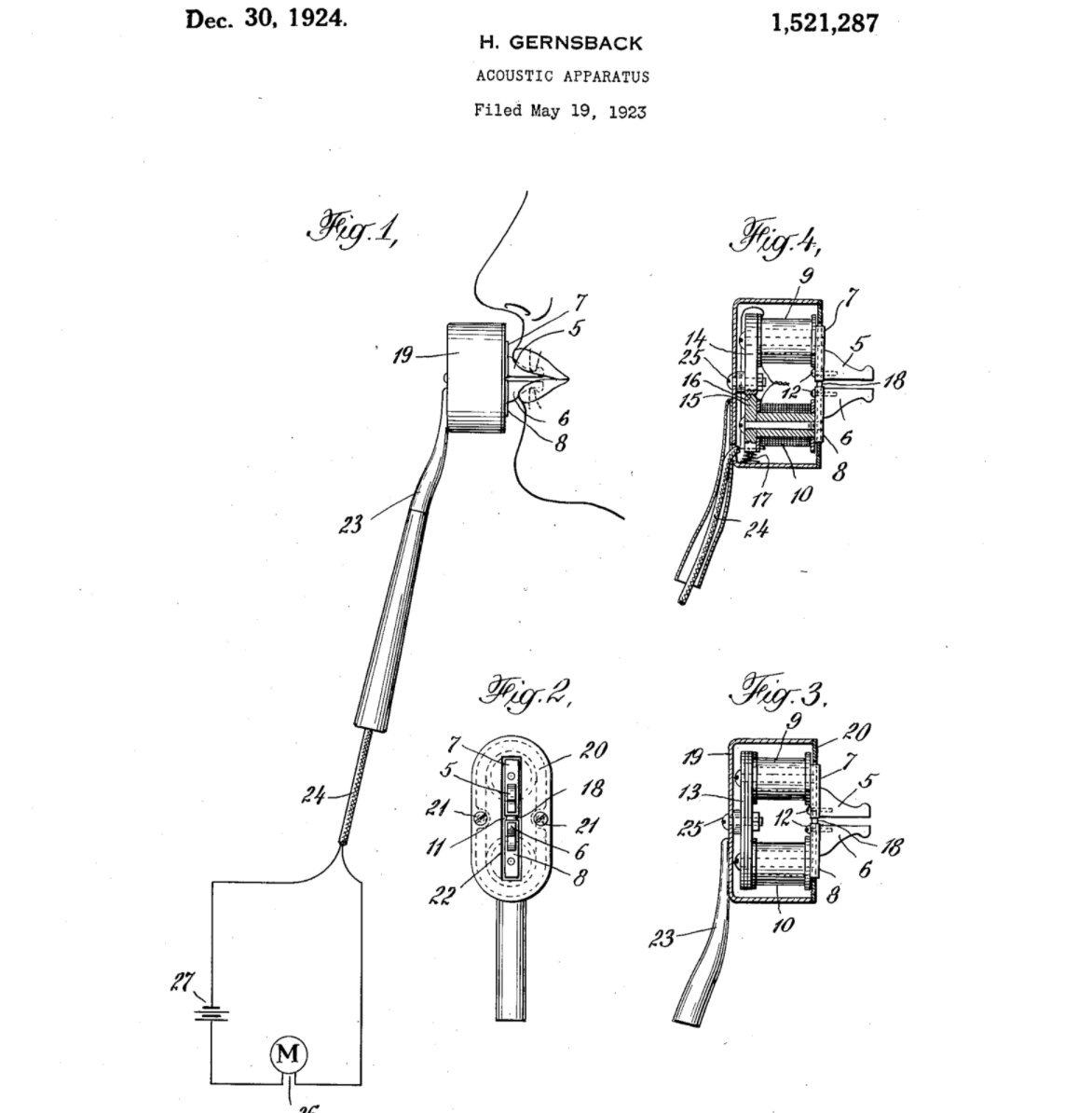
If we take only the sports and entertainment sphere, then Aftershokz can be offered both in tourism and as headphones for gamers, and, as already mentioned, for educational purposes, etc.
Wired headphones for sports are now less often chosen, of course. However, the possible discomfort from the wire with the battery is compensated by the lightness of the headband itself, as well as by a small clothespin, with which you can fix the Sportz on clothes (wire length 130 cm).
However, this does not mean that wired headphones sharply ceased to be used by athletes. Very much:

Photo: daddydidyouwin / theswagmama / runmomdiary (Instagram)
Makes Sportz attractive and the price: wired headphones are half - three times cheaper than wireless.
Sound absorption and vibration
The main complaint about the early models was that they strongly “give out” sound to the outside, and it turns out that the process of listening or talking on the phone ceased to be intimate.
It’s one thing when you ride a bicycle on the highway, and the likelihood that someone will eavesdrop on you is minimal. Another thing is an unsportsmanlike setting, for example, in the same office. Starting with Bluez 2S, Aftershokz models have significantly “recovered” in this direction and now at a comfortable volume for the listener (on the smartphone about half) external sounds are almost invisible and barely audible.
The sound “to the stop” on such headsets also generates vibration. These fluctuations in the sensations are not nasty and are hardly perceptible at medium volumes! At the same time, appearing at maximum, they do not distort the sound, do not add any rattling.
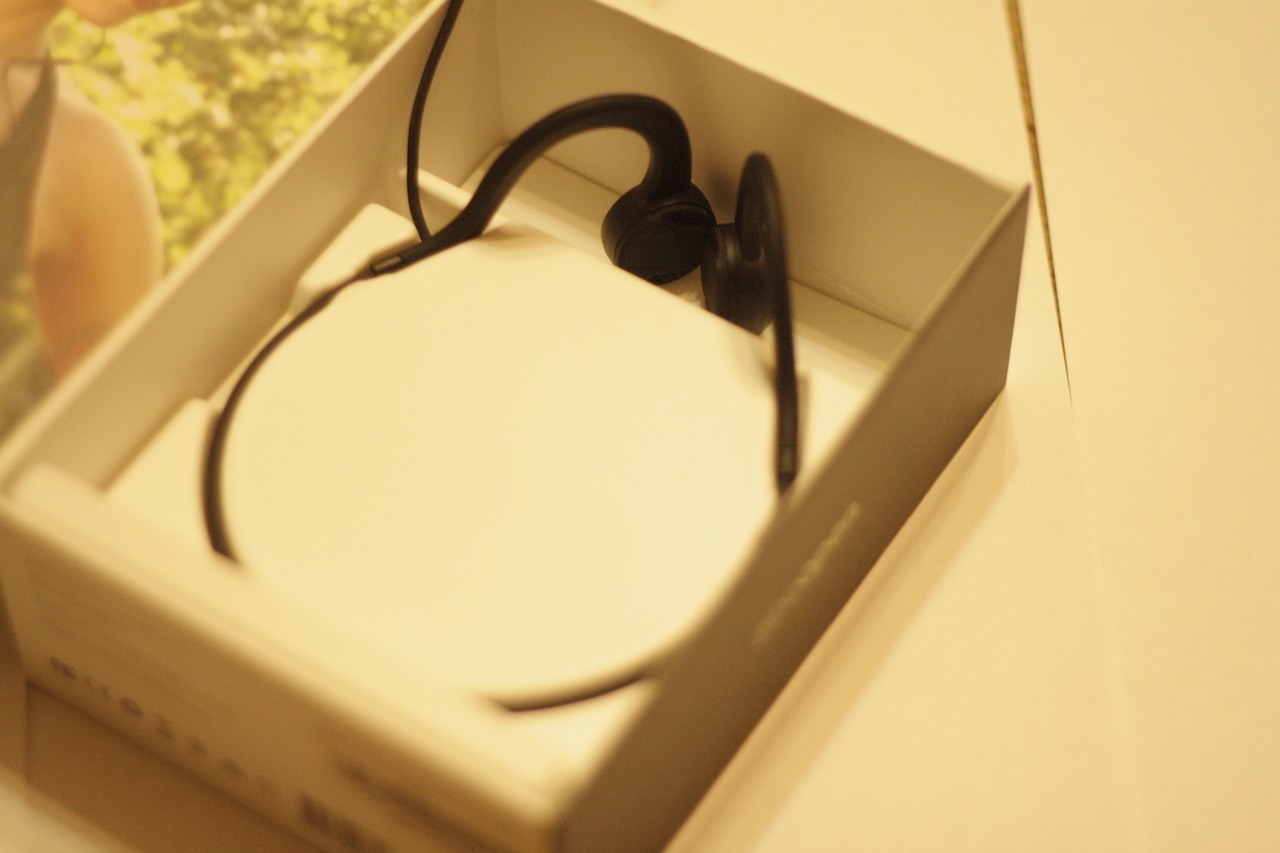
They are sold in a company box, inside which is also a case and MicroUSB.
Headphones with bone-conduction sound should not be confused (and compared) with headphones that use bone-transmission technology. In the latter, sound emitters are built into the ear cushions, and most of the energy is not transmitted through the air, which prevents the bass from damaging the eardrum. Such headphones, as a rule, are classified as overhead and cover the ears of the listener.
Aftershokz headsets use onlybone conduction, which means they don’t cover their ears at all. There are currently three main headsets in the lineup: Bluez 2s, the flagship Trekz Titanium and the new Sportz models.
Titanium, or as they say “Tithenium”, is distinguished primarily by its flexible and durable headband, which holds its shape perfectly, does not break.
And it is also very light - the last model to be discussed: the approximate weight of the headband is 20 grams, the weight with the wire is 44 grams.
Sound
Sound has always been a controversial and partially “weak” side of bone conduction headsets, because they were inevitably compared with the “classic” ones. Nevertheless, even when Trekz “ smashed ” the Verge edition in the usual manner , there was nothing but the usual “weak bass”.
Indeed, piezoelectric emitters transmit lower frequencies worse, which is why the bone conduction of sound has taken root better in industries such as medicine, military affairs, scuba diving, and some others. However, Verge also admits that Aftershokz is still the best in the headphone category based on such technology.
The company itself emphasizes that it did not create headsets for music lovers. The main target audience is athletes (running and cycling), for whom a similar design of the headband allows you to feel more secure, respond to the sounds of the world in a timely manner, and also answer calls.
Also, models are in demand as headsets for motorists, for those who listen to audio lessons or books, where sound quality is not of paramount importance, or as an office headset.
But - the bass, it must be admitted, is still not the strongest place. To roughly understand how unusual everything is, you can use common tests from the network .

I quote literally. On checking the low frequencies compared to conventional headphones ( Croise plugs were on hand ):
- Aftershokz - sound with open ears heard at 80, sound with closed ears at 60
- Croise - I heard the sound, as expected, at 20
In the second case, with high frequencies:
- Aftershokz - sound at 18
- Croise - sound at 16
Design
By and large, constructively such headphones could be anything, because depending on the quality of the speaker, bone conduction will work from the forehead, and - as is possible with Aftershokz - from the elbow.
However, historically, headphones have been attached to the head, and Aftershokz Sportz Titanium has followed tradition. The only difference is that the speakers “throw” through the ears, like the temples of glasses, and are located in the temple area, without blocking the auricles.
The wired model came out unusually light. Partly due to the fact that the battery, which is “sewn” into the body of Bluetooth models, is wired. On the same block is the headset power button.
Here is the connector for charging the gadget! Since sound vibrations pass through a much more “dense material” —the skull bones — they need more energy, and even wired headphones with bone-conduction sound must be charged.
The remaining control buttons are placed in a separate element.
Speakers Sportz Titanium Round.
In sports
For the most part, the headphones with the technology of bone conduction of sound have the image of "sports" fixed because they do not cover their ears. However, since the first Hugo Gernsback consumer patent, which proposed the Osofon audio device in 1924, there are much more use cases.

If we take only the sports and entertainment sphere, then Aftershokz can be offered both in tourism and as headphones for gamers, and, as already mentioned, for educational purposes, etc.
Wired headphones for sports are now less often chosen, of course. However, the possible discomfort from the wire with the battery is compensated by the lightness of the headband itself, as well as by a small clothespin, with which you can fix the Sportz on clothes (wire length 130 cm).
However, this does not mean that wired headphones sharply ceased to be used by athletes. Very much:

Photo: daddydidyouwin / theswagmama / runmomdiary (Instagram)
Makes Sportz attractive and the price: wired headphones are half - three times cheaper than wireless.
- So, for example, a model with a microphone costs 4,290 rubles
- Version without a microphone - 3,490 rubles
Sound absorption and vibration
The main complaint about the early models was that they strongly “give out” sound to the outside, and it turns out that the process of listening or talking on the phone ceased to be intimate.
It’s one thing when you ride a bicycle on the highway, and the likelihood that someone will eavesdrop on you is minimal. Another thing is an unsportsmanlike setting, for example, in the same office. Starting with Bluez 2S, Aftershokz models have significantly “recovered” in this direction and now at a comfortable volume for the listener (on the smartphone about half) external sounds are almost invisible and barely audible.
The sound “to the stop” on such headsets also generates vibration. These fluctuations in the sensations are not nasty and are hardly perceptible at medium volumes! At the same time, appearing at maximum, they do not distort the sound, do not add any rattling.
They are sold in a company box, inside which is also a case and MicroUSB.
